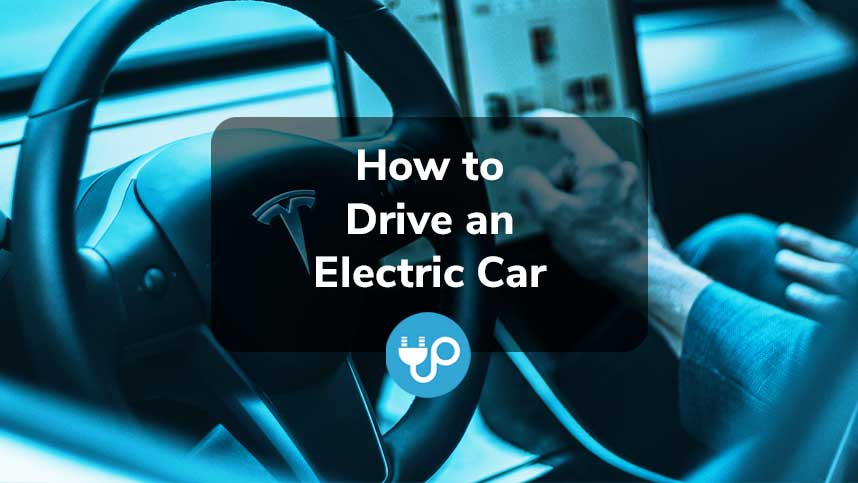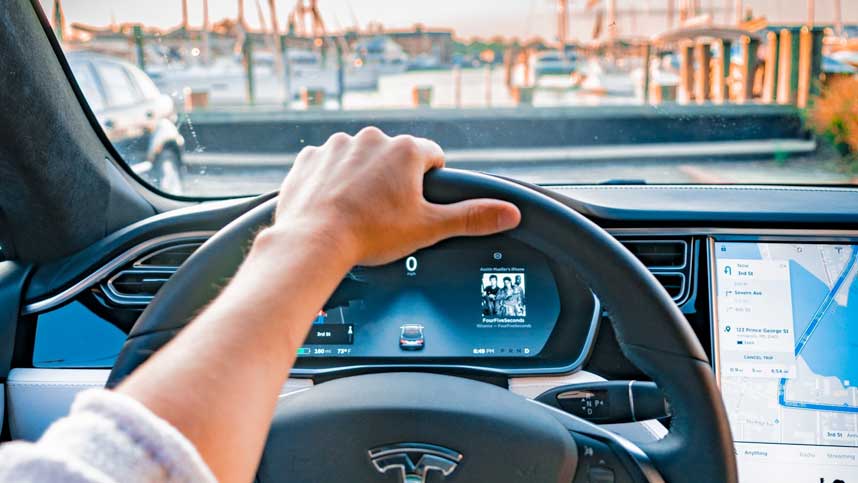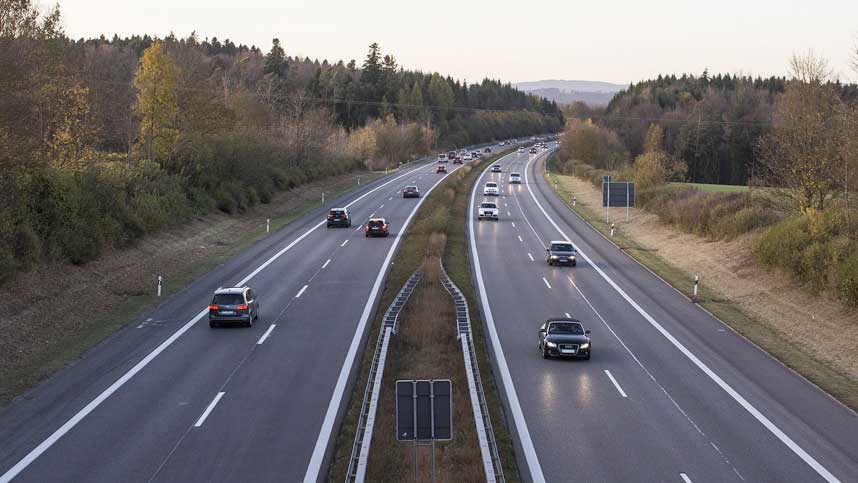
How to Drive an Electric Car
Electric cars are a fantastic alternative to traditional ICE (internal combustion engine) vehicles.
They provide environmentally friendly transportation and are ideal for performance driving.
However, electric cars require a different driving style than traditional vehicles to get the very best out of them.
Their instant torque and steering response can be a challenge for inexperienced drivers.
Fortunately, the controls and procedures are primarily similar.
This article will explain the main differences in driving an electric car, and how simple and easy it is.
Chapters
Basics of Driving an EV
The basics of driving an electric vehicle are the same as those of a traditional petrol or diesel powered vehicle.
All EV’s use automatic transmission, so have two pedals:
- a brake
- an accelerator
So they are essentially identical to a traditional automatic vehicle.
Likewise, the steering wheel serves the same function.
There’s literally no difference in steering procedures.
How Driving EV's Differs from Petrol & Diesel Cars
Driving an EV requires certain different approaches from a petrol or diesel car.
The power curve of the electric motor is unlike that of a petrol or diesel motor.
Unlike petrol or diesel cars, EVs have no engine lag at low speeds.
So they can accelerate and reach top speed very quickly.
Acceleration
EVs accelerate much more aggressively from a standstill than petrol or diesel engines.
Their full power is available at rest, unlike petrol or diesel motors that need time to generate power.
An EV is extremely effective in cities due to the instant power and acceleration available from idling.
However, an EV will drop off in power past 95-100 mph (160 kph), yet petrol and diesel engines are faster due to extra gears.
Therefore, an EV is superior during low-speed manoeuvres, whilst petrol and diesel motors are more effective at higher speeds.
Braking
EVs are equipped with traditional disc brakes, like the majority of road vehicles.
The disc brakes function identically to those of a fuel-powered vehicle; the design and function are the exact same. No differences.
However, EVs are equipped with a regenerative braking system, which uses the electric motor to help slow the car.
Regenerative braking effectively spins the motor backward to slow the car and recover lost energy.
Many EVs (Tesla Model S, Porsche Taycan) are equipped with adjustable regenerative braking alongside traditional brakes.
At low speeds, regenerative braking can replace friction brakes, reducing wear and tear and recovering energy.
Transmission
EVs do not have traditional transmission.
While a traditional car may have a 5, 6, or even a 7-speed gearbox, most EVs have a single speed transmission.
The motor drives a small transmission with one planetary gear set to allow for drive, reverse, and neutral.
As EVs can spin the motor up to 18,000 rpm, a traditional transmission is unnecessary.
Therefore, a single-speed transmission saves weight and reduces complexity.
However, the Porsche Taycan has a 2-speed transmission for the rear motor.
The Porsche's 2-speed transmission adds weight but saves energy during highway cruising.
Therefore, there are advantages and disadvantages to a multi-speed transmission for EVs.
Engine Noise
An electric motor makes almost no noise during operation.
Therefore, road noise is a much bigger issue with EVs than engine noise.
Additionally, the lack of engine noise constitutes a safety issue for pedestrians.
Very often, they cannot hear a car rolling towards them.
Some EVs play noises through external speakers to compensate and warn pedestrians.
However, for the driver, the lack of engine noise creates a more relaxed driving experience overall.
Road Noise
EVs have extra sound deadening to muffle road noise, as there is no engine noise to cover it.
In traditional cars, engine noise tends to cancel out road noise and vice versa.
However, extra sound deadening is required in an EV to muffle road and tyre noise.
Some EVs are equipped with white-noise functions to reduce road noise and provide a relaxing atmosphere.
Additionally, EVs use smaller, low-profile tires to reduce noise and vibration.
Range
As with a petrol or diesel car, the range depends on driving habits, temperature, and overall vehicle maintenance.
EV batteries are sensitive to temperature.
For example, the range can drop significantly above temperatures of 24ºC or below temperatures of 10ºC.
Excess cargo and accessories, such as roof boxes, will also impact the range.
Long-range EVs (Tesla Model S, Lucid Air) can achieve a maximum range of 400-500 real-world miles.
Care is essential when considering charging stops.
Preconditioning
Preconditioning refers to heating, or cooling your EV cabin to the ideal temperature while it is still charging.
The process allows you to depart with a full battery and the vehicle cabin to be at the ideal temperature.
It also saves energy and increases range because you always set off with a full battery instead of diverting energy to heat or cool the cabin whilst driving.
Preconditioning can be done while the vehicle is plugged into any charger, and not just a home charging unit.
How to Maximize Your EV’s Range
As with traditional petrol and diesel motors, an EV range can be maximized by following simple techniques and driving more efficiently.
Drive Smoothly
You can maximise an EVs range by driving smoothly.
Lift off the throttle and coast to stop lights instead of braking right before the light.
Accelerate more smoothly instead of blasting the accelerator with your right foot.
Quick aggressive starts use much more energy.
Cruise at a steady speed.
Constant speeding up or slowing down will severely deplete your EV range.
Slow Down
Maintaining constant speeds and driving slower can maximise the range of your EV by driving slower overall.
EVs prefer long cruises between 40 and 55 mph, however this is impractical on motorways.
Driving at 40-55 mph on normal roads and 60-65 mph on the motorway will help maximize the range.
EVs use more energy at higher speeds due to only having one gear.
Therefore, slower is better and saves energy.
Regenerative Braking
Most EVs are equipped with regenerative braking.
Regenerative braking spins the electric motor backward to slow the car and recover lost energy.
Some EVs have adjustable regenerative braking.
When set to maximum, you can drive the car without touching the brake pedal for most of the journey.
Regenerative braking helps recharge the battery in small quantities and reduces disc brake wear.
Certain car manufacturers have incorporated braking and acceleration into one pedal, simplifying the experience further.
However, these one-pedal systems are not yet widely used and may prove problematic.
Heating & Air Conditioning
Heating and air conditioning systems both affect the range of your EV.
The heater relies on a heat pump that circulates warm air generated by the heat from the battery coolant.
Air conditioning relies on a standard air conditioning system with an electric compressor.
Both heat and AC draw significant battery power.
To save battery power and range, be sure to precondition your vehicle while it is connected to a charger.
Preconditioning the climate control system will save battery power by reducing the need to adjust the temperature on the move.
Tyre Pressures
Tyre pressures are one of the easiest ways to maximise the range of an EV.
Higher tyre pressures mean less rolling resistance, improving energy consumption and maximising range.
Lower pressures make the electric motor work harder, consuming more energy and reducing range.
Ensure that your tyre pressures are set to the recommended level.
Check the driver's side door pillar for information on tyre pressures.
To maximise range, set pressures to the maximum recommended on the door.
Adjust as necessary.
Plan Efficient Routes
Planning the most efficient route aids in maximising your EV range.
Routes with multiple traffic stops and frequently heavy traffic will significantly reduce the range of your EV.
However, a route with even, straight roads will maximise range, even if it is a little longer.
The most efficient route is not necessarily the shortest.
Longer routes with no stops will be more efficient, even if the overall distance is greater, simply due to a steady cruising speed.
Prebook Charging Sessions
While EVs have a limited range, the problem can be mitigated by pre-booking charging sessions.
Many EV charging stations allow pre-bookings to save wait times when charging.
Pre-booked sessions at privately owned off-street chargers can be reserved by using apps like Joosup.
Pre-booking charge sessions allows you to destination charge around your overall needs, reducing range anxiety and the need to find a charging point.
It’s very uncommon for public charging stations to allow pre-booking however.
Usually only privately owned charge-points can be booked, but many motorists find this to be an effective option.
Do EVs Make Any Sounds While Driving?
EVs do make a noise whilst driving, but very little.
Electric motors are so quiet that some models of EV play sound through external speakers for pedestrian safety.
You can hear the electric motors from inside the car, but outside it is subtle and quiet.
EVs mainly produce tyre and road noise, as opposed to motor noise.
Can I Take a Driving Test in an EV?
An EV is an acceptable vehicle for a driving test.
No major differences in an EV would disqualify it from a road test.
An EV is a regular vehicle with electric power, therefore it’s legal for a driving test.
Other Must-Know Facts About EVs
The Tesla Model S Ludicrous is the quickest accelerating car in the world.
It takes just 2.1 seconds to go from 0-100 kph.
The Lucid Air holds the longest effective range for an EV, achieving 517 miles when tested by MotorTrend.
A Tesla Model S will beat an Alfa Romeo in a 1/8th mile drag race while towing another Alfa Romeo on a trailer.
Conclusion
Electric vehicles may seem intimidating and unfamiliar at first.
However, they are just as easy to drive as a traditional petrol or diesel car, with some minor adjustments.
Additionally, with pre-booked charging and a home unit, they are excellent for short trips and even small road trips.
In the current economic climate of high energy and fuel charges, they’re also proving to be much cheaper to run too!
Blog Archive
- Vehicle to Load (V2L): What It Is & How It Works
- 16 Top Charge Point Operators in the UK
- 8 Types of EV Battery Explained
- Where Can I Charge My Electric Car?
- Electric Car Maintenance and Servicing Guide
- How Often Should I Charge My Electric Car?
- How to Check EV Battery Health
- Do Electric Cars Pay Road Tax?
- October 2024 Budget: Key EV News
- EV vs ICE – Which is Best?
- Should I Charge My EV to 80 or 90 or 100%?
- UK Government Announces Hybrid Sales Allowed Until 2035
- BEV vs PHEV – What’s the Difference?
- Definitely Not A Guru (Jim Starling) Reviews Joosup
- How Long Do Electric Car Batteries Last?
- 25 New Electric Car Brands on UK Roads
- General Election 2024: Major Party Net Zero Policies Compared
- Electric Car Service Costs vs ICE
- CHAdeMO vs CCS – What’s the Difference?
- Mr EV Reviews Joosup



